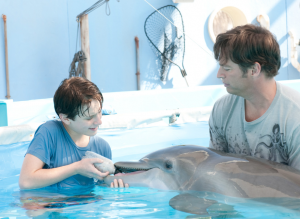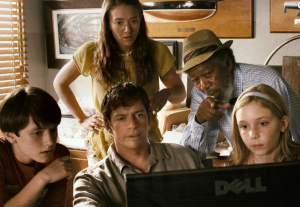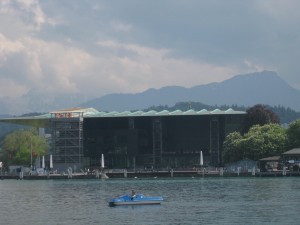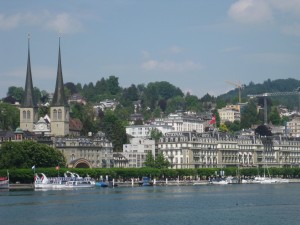Last week I saw the new Warner Brothers movie Dolphin Tale with my kids. Warner Brothers describes the movie as a “heartwarming, fun adventure about the healing bonds of family, both human and animal.” What I saw was a great story about passion-based, need to know learning, and its transformative power. Dolphin Tale shows what teaching and learning can be like, right now, if we approach it from the humanity of learners. In this movie a young boy becomes aware of himself and his power as a learner.
http://dolphintalemovie.warnerbros.com
Dolphin Tale is based on a true story about the rescue and rehabilitation of an injured Dolphin of the coast of Florida. Twelve year old Sawyer has few friends and lives with his single mom (Dad split years ago). He has to go to summer school to avoid failing out. It’s boring. He’s pissed. On his way to class he finds a dolphin that has washed up on shore in a tangle of ropes and with a crab trap mangling his fin. Sawyer uses his pocket knife (a gift from his cousin who is shipping out with the army) to cut the ropes and help the Dolphin (who gets named Winter later in the movie). But Winter isn’t looking so good. Clearwater Marine Hospital rescue workers arrive and prepare Winter for transport back to the hospital for rehabilitation. The situation looks grim. As they’re about to drive off, they tell Sawyer he did a good job cutting the ropes. After class Sawyer bikes by the dilapidated Clearwater Marine Hospital and sneeks in to check out Winter’s chances for survival. This launches Sawyer into a learning journey that is personally meaningful and rewarding for him and the broader community.
The transformative world of learning that emerges in Dolphin Tale rests on a few key components: “need to know” learning events; self service learning platforms; peer communities; peer assessment; public recognition of learning; and public impact/relevance.
Need to know learning events. Finding Winter presents Sawyer with a compelling challenge, both moral and academic. How is Winter going to survive if she can’t swim? It prompts compassion, responsibility, and action in Sawyer. It compels him to find a solution.
Self service learning platforms. As Sawyer learns more about Winter’s health and the complications associated with her survival, he turns to his garage workbench (where he tinkers already with toy helicopters) and jumps online to find out what he can about dolphins, fins, and prosthetics. He educates himself. He combines insights from visiting his injured cousin at a Veteran’s rehabilitation center with his Dolphin web research to come up with a solution approach for Winter.
Peer communities. Sawyer cuts summer school and hangs out at the Marine Hospital to help with Winter’s rehabilitation. He becomes one of them. He begins to act and think like a scientist, a problem solver. When his mom finds out he’s been ditching school he convinces her to give him permission to stay involved. She ultimately realizes he has become fired up and passionate about something meaningful when she sees how he has become a part of a peer community of learners and marine biologists. They become an important learning community in which each is sharing knowledge and contributing to greater understanding. His personal learning experience is nested in a larger community of exploration and learning.
http://dolphintalemovie.warnerbros.com
Peer assessment. Sawyer tries to get credit for his work at the Marine Hospital at his summer school, but is unsuccessful. The teacher states that if he doesn’t show up at class he can’t get credit. Now Mom is pissed off too. She tells Sawyer to go for it. The important assessment and validation of Sawyer’s learning rests in his peer community and his work’s impact in the community. As he learns more and shows more confidence he takes on greater responsibilities and challenges with Winter.
Public impact/relevance. The “project” that Sawyer invests his time and energy in has implications for the broader public. The journey of finding and saving Winter ultimately saves the struggling Marine Hospital, creates a vibrant community organization, and most importantly becomes a symbol for many people struggling with disabilities. Sawyer learns, the team learns, and the community benefits.
Many of these learning components are discussed in books like A New Culture of Learning: Cultivating the Imagination for a World of Constant Change and explored in projects funded by MacArthur Foundation’s Digital Media and Learning efforts . It was great to see them in a popular movie.
Dolphin Tale is successful as an “education film” precisely because it’s purpose isn’t to tell us a story about the challenges and inequities of a broken system (e.g. Waiting for Superman), but to focus on the whole life of a learner and the personal relevance of learning. Systemic decisions about education should flow from this perspective. I hope educators, policy makers, parents, kids, and entrepreneurs watch this movie. It takes us in a direction of positioning education, teaching and learning as a purposeful, joyful and vital part of community life.




